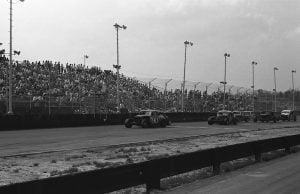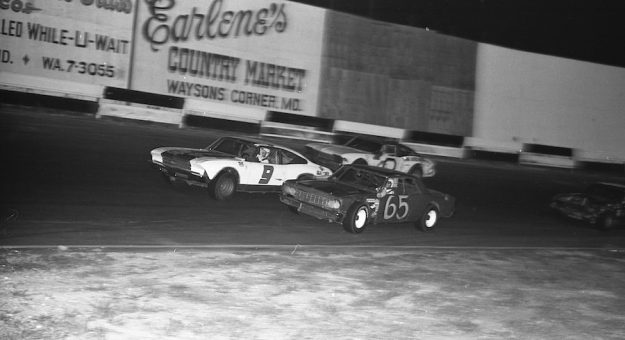Shortly thereafter, Beltsville announced a late-season race named the Indian Summer Classic, which combined separate features for modifieds, now a special-events-only class, and the newly hatched Late Model Sportsman division. The format mimicked the wildly successful Dogwood 500 and Cardinal 500 doubleheaders at Martinsville (Va.) Speedway, which Jendras says was fitting.
“Tom Lillis and his partners wanted to build a track that was on par with Martinsville, that would run both weekly and also feature the Grand National (NASCAR Cup Series) cars when he built Beltsville,” Jendras said.
At least in the beginning, Lillis’ plan worked solidly. During its history, Beltsville presented 10 races for NASCAR’s premier division, generally 200-lap affairs, with Ned Jarrett and Tiny Lund wiring the field to finish 1-2 in the 1965 Maryland 200. 1970 Cup Series champion Bobby Isaac was the big winner at Beltsville with three premier series scores, compared to Richard Petty with two.
NASCAR also presented two Beltsville shows for its Grand American division featuring compact cars. The winners were Lund and Pete Hamilton, another New England star in the modifieds, who won the Daytona 500 for Petty in storybook fashion the following year.

The changes that followed at Beltsville ended its days of Cup Series competition and ultimately, everything else. Jendras recalls that around 1969, a major residential development began to rise on open land just north of the speedway.
Shortly thereafter, a change took place that did a lot to redefine, and advance, the weekly Beltsville race car. NASCAR was gradually pressing for the adoption of newer bodies at its weekly tracks, and in 1967, local hero Bobby Ballantine bought a used Cup Series car from Junie Donlavey and converted it for short-track use, winning the Late Model Sportsman title at Beltsville the following year.
That brought in a trickle of ex-Cup Series cars built by specialists such as Emanuel Zervakis and Ronnie Hopkins.
“So at Beltsville, you started seeing the manufactured cars more than the homebuilt ones,” Jendras explained.
By the early 1970s, Beltsville had reverted to its multi-division weekly card with the modifieds coming in, briefly, for the Indian Summer race that was soon off the schedule. Beltsville settled in with a consistent, competitive program with a strong regular turnout of Late Model Sportsman cars. Ageless heroes such as Ballantine and one-legged Reds Kagle were the mainstays, but as Jendras put it, “You started to see the manufactured cars filtering into the local scene. If a track like Southside Speedway outside Richmond wasn’t running, you’d see three or four southern cars come up to Beltsville to give them 24 cars, a full field. It wasn’t as many cars as the dirt tracks like Lincoln and Williams Grove were getting up in Pennsylvania, but it was still a quality field.”
Invaders including Bobby Allison and Joe Thurman towed in to face locals such as Glen Guthrie, Joe Westerman and Bill Hanbury.
Remember the houses that started going up in 1969? The new residents learned there was a speedway in their neighborhood and they didn’t appreciate it. Complaints started mounting nearly from the time the moving vans unloaded.
Beltsville became one of the first motorsport facilities in North America to require mufflers on racing vehicles, in 1975, with officials from Prince Georges County monitoring the noise. Next, the track erected a sound wall around turns three and four. Soon, it was extended the length of the backstretch.
During the same years, Beltsville went through a series of promoters that succeeded Lillis. According to Jendras, Kagle’s brother, Hoss, himself a sometime driver, held the reins for a bit. So did the owners of successful Capitol Raceway in Crofton. The muffler requirement ended Cup Series racing after Isaac won a 300-lapper on May 15, 1970.
